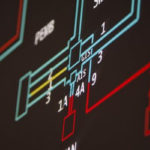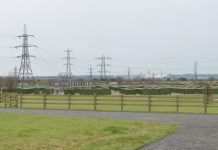 National Grid Electricity System Operator (ESO) has outlined the future of frequency response and reserve procurement as it bids to keep an increasingly renewables-driven power system stable.
National Grid Electricity System Operator (ESO) has outlined the future of frequency response and reserve procurement as it bids to keep an increasingly renewables-driven power system stable.
As renewables penetration increases, usable inertia on the system is falling – and that is likely to continue, said the ESO. So it has redesigned frequency services to try and better meet evolving needs for faster response.
It will replace existing frequency response services with a suite of new products: Dynamic Containment (DC), Dynamic Moderation (DM), and Dynamic Regulation (DR).
Dynamic Containment will operate post fault, in response to significant frequency excursions, such as the August incident which ultimately ended with demand being disconnected.
For that service, the ESO needs very fast (sub-second) response in both directions and said it will likely procure high-frequency and low-frequency versions separately.
Grid wants to move quickly (i.e. the need is urgent) and aims to start procuring the service by March 2021 at the latest.
However, the ESO said it doesn’t initially expect DC to replace other frequency services. It will procure both in parallel to start with, though it will wind down monthly FFR tenders to finish at the end of Q4 2021/22.
New frequency services
Dynamic Moderation is designed to correct sudden imbalances. The ESO said providers will need to occasionally deliver rapid proportional response outside a defined band above and below 50 Hz.
Dynamic Regulation is designed to manage ongoing small deviations in frequency. Assets do not have to respond as rapidly, but providers will have to be able to deliver continuously.
National Grid said it would try to make sure all kinds of assets can take part – across storage, generation and demand-side response. It said feedback from industry had been consistent on that theme. (Both aggregators and end-user providers with load assets have long complained of a perceived preference for battery-type assets.)
While Grid has trialled some interim frequency services as part of an auction trial, it said it will stop developing most of them and proceed to the DC/DM/DR enduring services. The ESO said that should also make life easier for providers in terms of reducing the number of tests during reforms.
Meanwhile, static response as a standalone service is likely to go. Grid said it will try to ensure providers can migrate to the new services.
Fast reserve
The document also outlines some changes to fast reserve, with an additional 300MW set for procurement in the December monthly tender for delivery in January. National Grid will also consult on bringing fast reserve services into more competitive formats early next year.
Project Terre
Terre, the European replacement reserve service delayed because the French TSO is not yet ready, is now set for launch by 30 June 2020 or whenever RTE gets its act together, whichever comes first.
National Grid said it will wait to see how wider access to BM and Terre play out before going further with reserve redesign. It also has to consider the implications of the EU regulations as part of the Clean Energy package, which require a “move towards the procurement of balancing capacity contracts over day-ahead timescales and requires that utilisation prices should not be pre-determined in contracts for balancing capacity. Energy related to balancing, including for reserve services, should be settled on a pay-as-cleared basis”, per the document.
Details here.
Weekly frequency response auction
In a trial which also forms part of its product roadmap, the ESO debuted a new frequency response auction platform last week, developed with Epex Spot to procure dynamic frequency response closer to real-time. On the auction’s opening day on Friday, a total of 10,284MW was traded on the platform.
Explaining the volume procured, a spokesperson said:
“The 10GW figure refers to the amount we will settle. In other words, we’ll pay for on average 60MW of response for each of the week’s 168 hours. Seven providers participated, with everyone winning some volume of the frequency response being auctioned, to a value of around £50,000.”
Related stories:
Grid chief: Inertia has been “taken for granted, it will become much more important”
National Grid uses more Stor and frequency response, flags changes
DSR providers urge National Grid to go faster, Ofgem to go slower
National Grid and Epex Spot to collaborate on weekly FFR auction
Terre and BM: Elexon opens market entry process for aggregators
National Grid to trial same day FFR auction
National Grid to bring wind and solar into FFR, details balancing system overhaul
Can the Balancing Mechanism offset FFR price erosion?
National Grid outlines plans to bring all flex providers into Balancing Mechanism
National Grid outlines plans for hundreds of millions worth of services
National Grid plots major overhaul of balancing services with frequency response first to change
National Grid mulls rolling all frequency response services into one
Click here to see if you qualify for a free subscription to the print magazine, or to renew.
Follow us at @EnergystMedia. For regular bulletins, sign up for the free newsletter.



